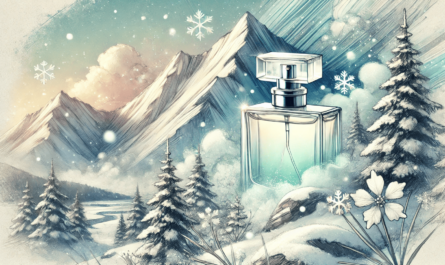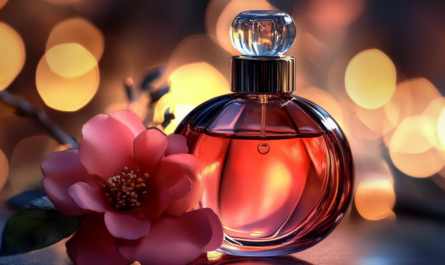Perfume has played a significant role in the cultural and traditional practices of many nations, serving as a medium for self-expression, celebration, and connection. Throughout history, the art of perfumery has transcended borders, reflecting the values, aesthetics, and resources of its origin. Today, perfumes act as a bridge between cultures, offering a sensory journey that unites people through shared appreciation for craftsmanship and heritage. Exploring the diverse traditions of perfumery reveals the profound ways in which scents connect and celebrate humanity.
Eastern Traditions: Mystery and Depth of Scents
Middle Eastern perfumery is synonymous with richness and opulence, featuring ingredients like oud, amber, and spices. These elements create complex, long-lasting fragrances that embody luxury and depth. Used in both personal adornment and sacred rituals, these scents hold a revered place in Middle Eastern culture. Perfume rituals often involve layering fragrances to enhance their complexity, reflecting the region’s appreciation for intricate artistry.
Indian traditions celebrate aromatic ingredients like sandalwood, jasmine, and incense. These materials are deeply rooted in spiritual practices and daily life, symbolizing purity and devotion. The use of natural ingredients reflects India’s connection to its environment and its rich history of holistic wellness. Perfumed oils and incense are integral to ceremonies and meditation, creating a harmonious atmosphere that soothes the soul.
Aromas in Eastern cultures often serve both ritualistic and practical purposes. Beyond their use in worship and festivities, scents are believed to carry symbolic meanings, such as protection, prosperity, and love. This duality illustrates the depth of connection between fragrance and everyday life in these regions.
The mystery and allure of Eastern perfumery continue to captivate global audiences, inspiring modern fragrances that draw from these timeless traditions. By blending ancient techniques with contemporary innovation, these scents remain a symbol of sophistication and cultural pride.
European Classics: Elegance and Sophistication
France stands at the pinnacle of global perfumery, renowned for its history, expertise, and influence. The country’s perfumers have mastered the art of blending precision and creativity, crafting scents that epitomize elegance. From the fields of Provence to the ateliers of Paris, France’s contributions to perfumery are unparalleled.
Italy’s citrus-based fragrances evoke freshness and vitality, drawing inspiration from the country’s sun-soaked landscapes. These scents are characterized by their light and invigorating qualities, capturing the essence of Italian joie de vivre. The simplicity and zest of Italian perfumery reflect its cultural emphasis on natural beauty and spontaneity.
British perfumery is marked by restraint and refinement, favoring subtle and sophisticated compositions. These fragrances often reflect the country’s rich history and aristocratic traditions, offering timeless elegance. British perfumes balance innovation with tradition, making them versatile and enduring.
European perfumery has set the standard for luxury and artistry, influencing the global fragrance industry. Through their distinct approaches, European nations showcase the diversity and creativity of the continent’s olfactory heritage, cementing their status as leaders in the art of scent.
Asia: Harmony of Nature in Fragrances
Japanese perfumery embraces minimalism and freshness, prioritizing subtle and calming aromas. Inspired by nature, these fragrances often feature green tea, cherry blossoms, and marine notes, creating a serene and balanced experience. This philosophy aligns with Japan’s aesthetic principles of simplicity and harmony.
- Chinese traditions highlight herbal and floral ingredients, reflecting the country’s deep connection to traditional medicine and natural remedies. Scents derived from peony, osmanthus, and other native plants carry cultural significance, symbolizing beauty, prosperity, and health. These fragrances often evoke a sense of timeless grace and elegance.
- Asian perfumery is deeply rooted in the natural world, drawing inspiration from landscapes, seasons, and spiritual practices. The emphasis on purity and balance creates scents that resonate emotionally and spiritually. This connection to nature ensures that Asian fragrances remain both contemporary and classic.
- Through their focus on simplicity and depth, Asian perfumery traditions offer a refreshing perspective on the art of scent, appealing to those who seek understated elegance and authenticity. These traditions emphasize the beauty of minimalism, where each ingredient is chosen with care to create harmonious compositions. This approach reflects a deep respect for balance and subtlety, resonating with those who value calmness and tranquility.
American Fragrances: A Blend of Cultures and Innovations
The multicultural landscape of America has shaped its perfumery, resulting in a dynamic and diverse fragrance industry. By blending influences from around the world, American perfumers create scents that are bold, experimental, and inclusive. This fusion reflects the nation’s spirit of innovation and openness.
Modern American perfumes often feature fresh, daring, and universal notes, appealing to a wide range of tastes and preferences. These fragrances prioritize individuality and versatility, catering to contemporary lifestyles. Their accessibility and adaptability make them a staple in global perfumery.
Innovation is at the heart of American perfumery, with creators embracing new technologies and unconventional ingredients. From sustainable practices to avant-garde compositions, the industry pushes boundaries while remaining grounded in quality and creativity. This forward-thinking approach ensures its continued relevance and appeal.
American perfumes embody the blending of tradition and modernity, offering scents that celebrate diversity and progress. Through their boldness and creativity, they serve as a testament to the limitless possibilities of perfumery as an art form.
In addition, we would like to recommend to you our other article, where we talked about men’s perfume.
FAQ
Perfumes often use local ingredients and traditional methods, showcasing the values and aesthetics of their origin.
They often feature complex and luxurious notes like oud and spices, which create depth and allure.
Its blend of multicultural influences and innovative approaches results in bold, versatile, and contemporary fragrances.




